Ochazuke green tea soup: the solution is in these EXACT measurements
If you’re like me and you seem to have less and less time these days, join me in making one of THE BEST one-bowl comfort foods that’s at the top of my list.
I’m talking of course about ochazuke, my favorite for the unique soup and rice bowl combination.
Let’s look at this AMAZING recipe and I’ll give some more tips along the way. It’s both easy to make and screw up, but I’ll let you in on the secret, it’s in the MEASUREMENTS!
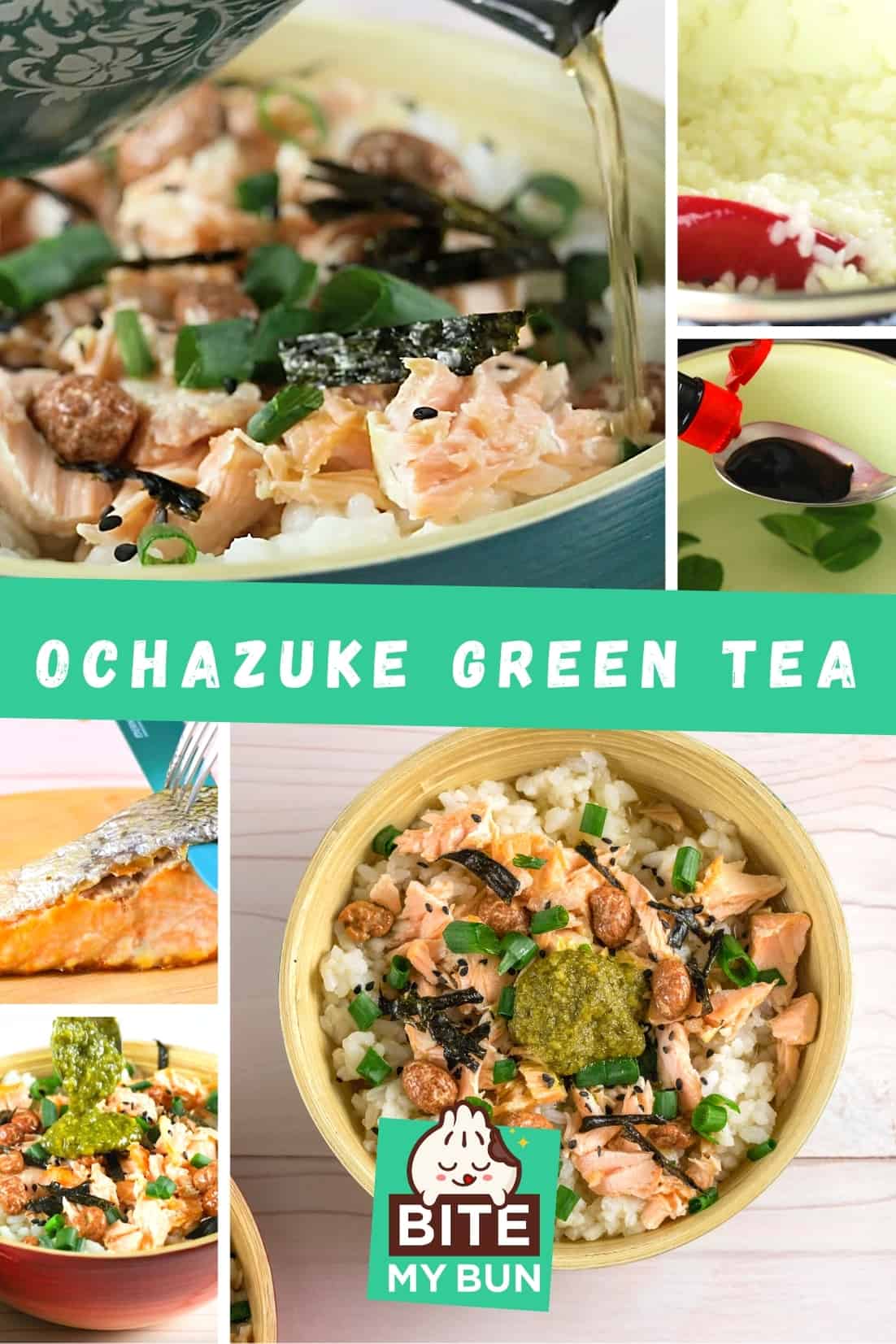

Check out our new cookbook
Bitemybun's family recipes with complete meal planner and recipe guide.
Try it out for free with Kindle Unlimited:
Read for freeIn this post we'll cover:
How to make ochazuke
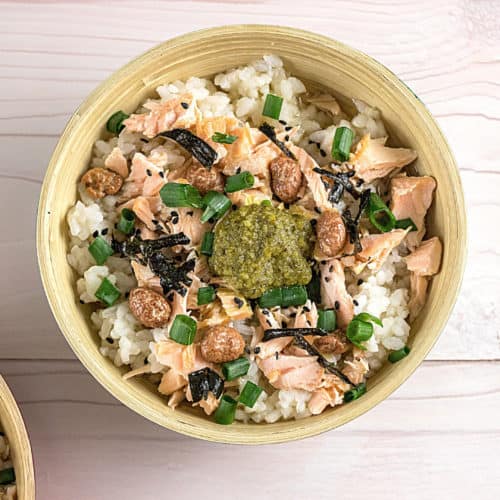
Ochazuke recipe with salmon
Ingredients
- 2 cups cooked rice preferably short-grain
Ochazuke toppings
- 4 ounces salted salmon that's one fillet of salmon (if you use fresh, just add lots of salt to it)
- 2 tbsp nori seaweed shredded
- 1 tsp sesame seeds toasted
- 2 tbsp rice crackers arare
- 1 spring onion chopped
- 1 tsp wasabi optional
Ochazuke green tea
- 4 tsp green tea leaves
- 2 cups hot water
- 1 tbsp soy sauce
Instructions
- Before making this recipe, you need to cook the rice in a rice cooker or on the stovetop.
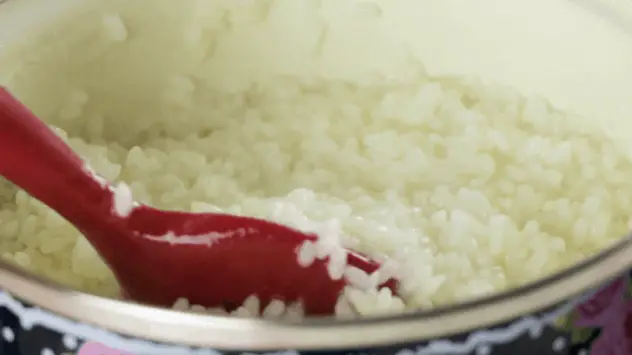
How to bake the salmon
- Preheat the oven to 425 F (220 C).
- Cook the salmon fillet for approximately 20 minutes. The salmon must be firm.
- Remove all the skin and bones and break the fish into small bite-sized pieces with a fork. If you have a ready-made fillet that's all the easier.

How to make green tea for ochazuke
- Boil water for the tea, and once it’s boiled, turn the heat off and add the tea leaves. Let it brew for 1-2 minutes or according to package instructions.
- In a pan, mix the green tea with the soy sauce.
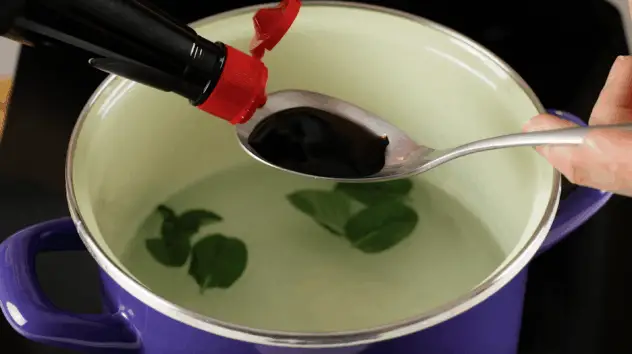
How to serve ochazuke
- Place the rice in two bowls. Add the shredded salmon. Sprinkle with rice crackers, spring onions, nori seaweed, and sesame seeds.
- Now the secret to getting the flavor and texture right is in the amount of green tea you add to the bowls. So make sure not too much of the 2 cups of water has evaporated when making the tea, or else the soy sauce will overpower the dish. Then pour the green tea mixture along the edges into each bowl and make sure the rice is half covered.
- Add a bit of the wasabi on the top and serve hot.

Video
Nutrition
What is ochazuke?
This is the kind of light dish people have in the evening as tasty comfort food because it’s very light on the stomach. Also, green tea is very refreshing and gives the rice an unusual but delightful flavor.
Ochazuke (お茶漬け), is a traditional Japanese rice soup recipe that dates back over 1000 years. Ocha is the term for green tea, and zuke means “submerged.”
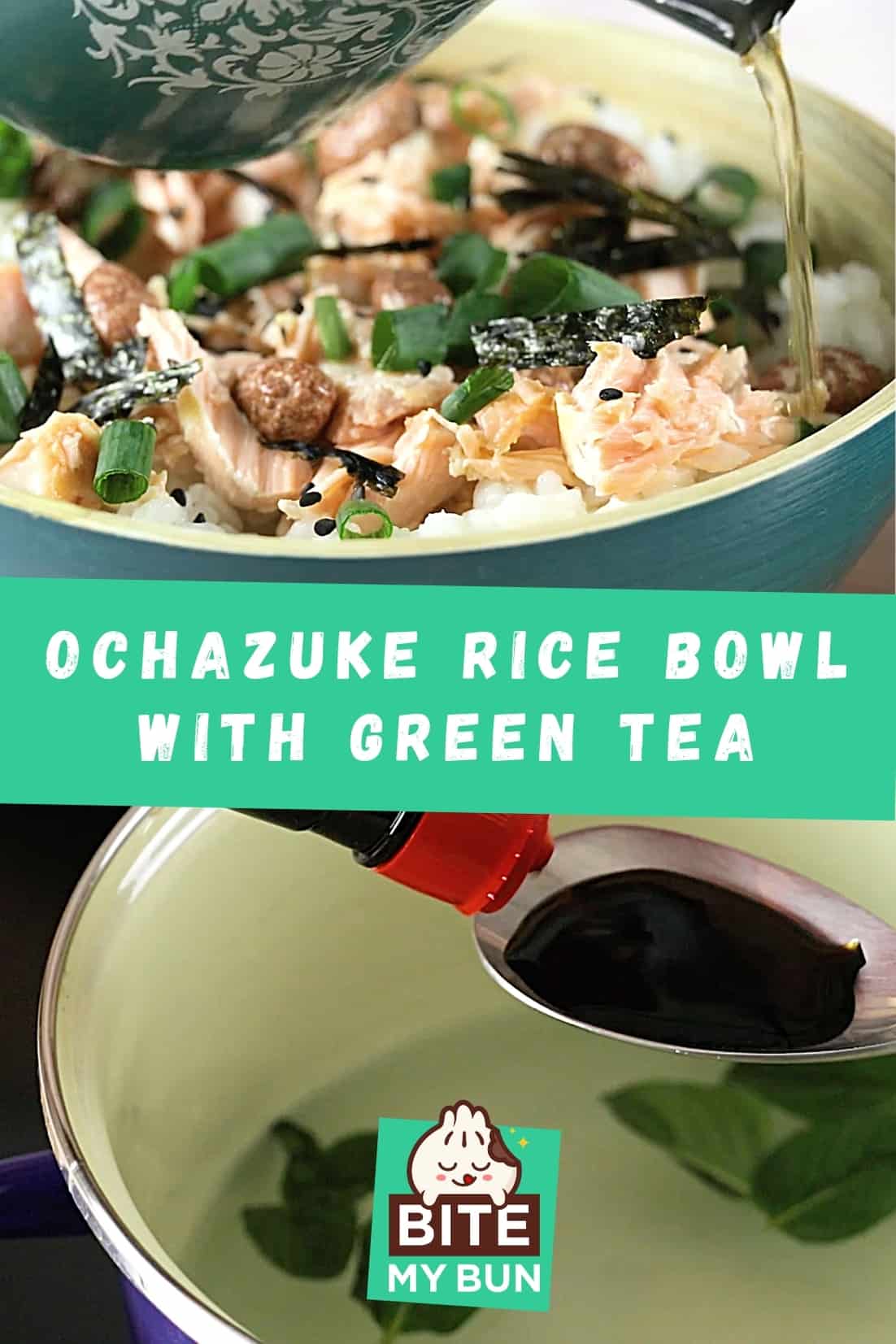
It’s the kind of “one-bowl” rice dish made by partially submerging rice in green tea. Think of it as a hybrid between a runny soup and a rice bowl, similar to Zosui Japanese rice soup.
Savory ingredients like salmon, seaweed, sea bream, and wasabi are added to the rice to make it a flavorful meal. Usually, most of the ingredients are seafood and fish-flavored, with the addition of some vegetables to make the rice healthier.
The idea behind the dish is that it’s easy to make with ingredients usually found in the pantry or fridge.
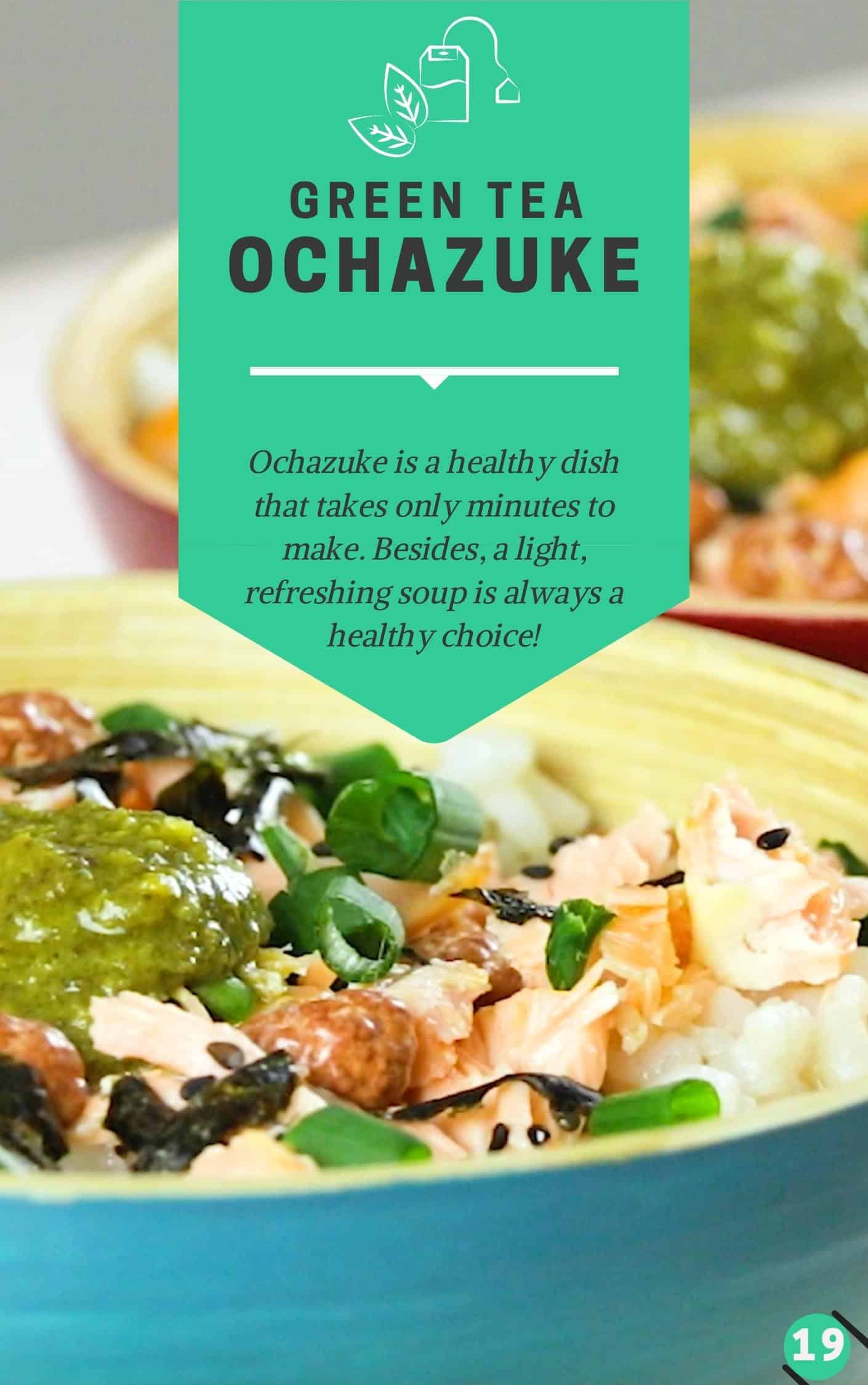
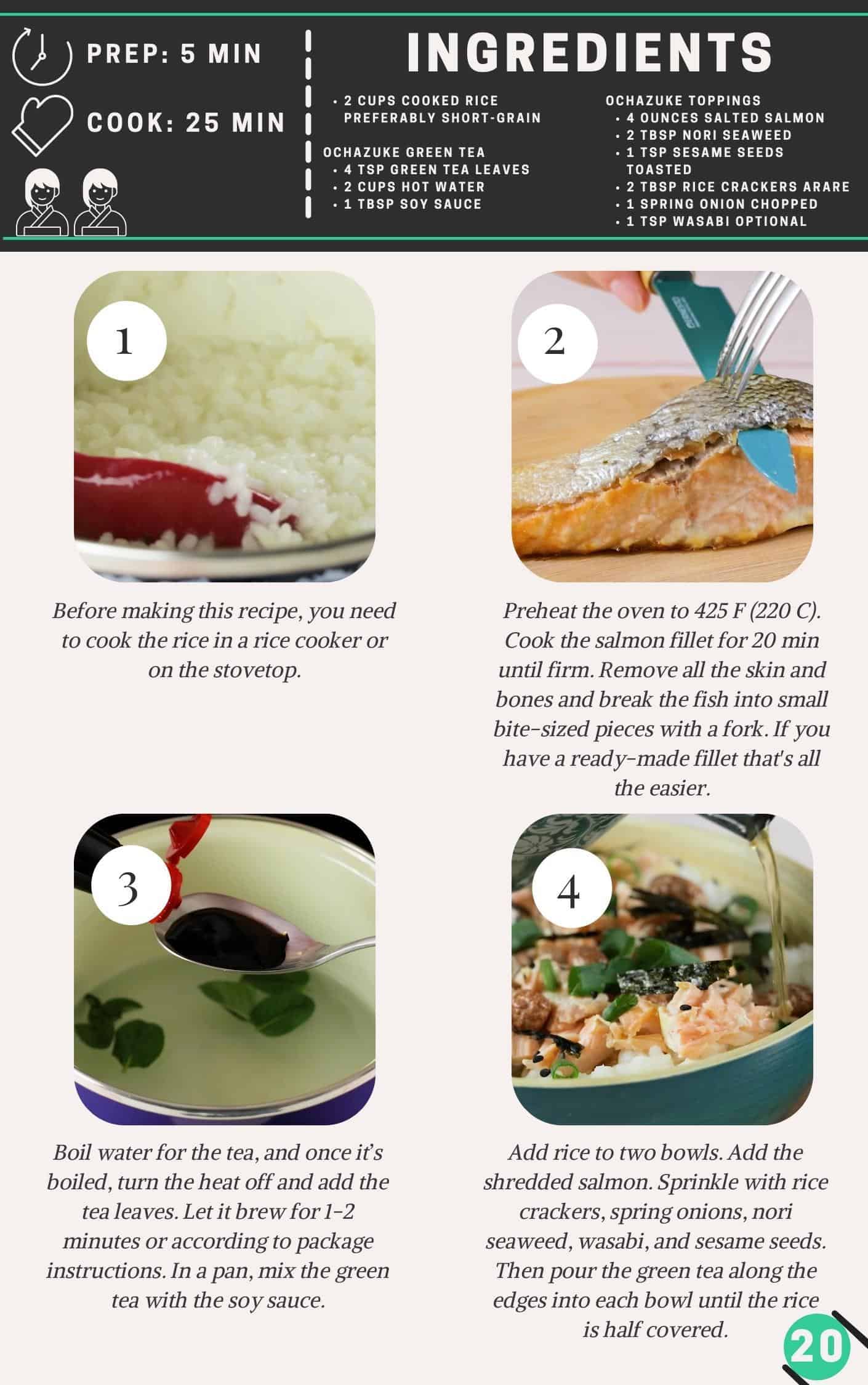
It’s supposed to be an affordable meal option; thus, you can add the simplest ingredients you already have on hand. Many people have leftover rice and don’t know what to make with it, so this recipe comes in handy!
Another delicious way to use leftover rice is Japanese fried yakimeshi rice!
Ochuzuke is commonly associated with late-night snacking or dining. Even in Japanese anime, you’ll see characters devouring a bowl of ochazuke in the middle of the night.
It’s very filling but also light on the digestive system. It’s one of those quick meals, perfect for busy people who come home late in the evening and want to throw something together in a hurry.
If you want to try instant ochazuke, you can order it on Amazon.
Green tea vs. dashi for ochazuke
So, traditional ochazuke is made with green tea. The usual types of green tea that are used include sencha, genmaicha, or hojicha.
However, Japanese restaurants have started to substitute green tea with dashi broth because it is salty and more flavorful.
Restaurants and fast-food establishments need to stand out, so they try to improve the dish by using something less bland than simple green tea.
But, when you make ochazuke at home, I recommend using green tea if you’re feeling a bit ill, or hungover, or you just want to feel that warm fuzzy feeling of comfort food.
If, however, you are craving something with a stronger flavor, dashi stock is the way to go.
I used green tea in my recipe because it’s the traditional ingredient that makes this rice soup so unique.
Another Japanese dish with green tea to try: Matcha Green Tea Ice Cream | What Is It? + Recipe
Ochazuke recipe variations
Rice
Short-grain white rice, brown rice, basmati, and jasmine rice all taste great in this recipe.
Actually, you can just use any leftover rice you have or cook some just for this dish. The type of rice you use depends on how many calories and carbohydrates you’re ready to gobble down.
Types of liquid you can use
Green tea
The first choice is green tea, which comes in many varieties. Genmaicha is a green tea and roasted brown tea. Hojicha is a classic roasted green tea.
Then, there’s bancha, a green tea made from late-harvest leaves, and it has a very intense flavor. But any green tea leaves you find will work too.
Dashi
The classic dashi stock made with kombu and bonito flakes is an excellent alternative with a salty kelp flavor.
Vegans can use a dashi stock made with kombu or shiitake mushrooms only, with no bonito flakes.
Hot water
If you’re not in the mood for green tea or dashi, you can always keep it simple and use hot water.
Pour it along the bowl’s edges to ensure it doesn’t make all the rice fall out of shape. Then it’s just like a classic rice soup without that green tea aroma.
During the hot summer months, you can use a cold brew, and the dish will be far more refreshing.
Toppings & ingredients
You can use many Japanese ingredients to make ochazuke, but some of them are hard to procure in the States or Europe.
But don’t worry, I have plenty of tasty topping recommendations you can use.
First, start off with some protein:
- Sea bream
- Grilled mackerel
- Flaked salmon
- Octopus
- Squid
- Oysters
- Sashimi
- Tarako (pollock roe)
- Mentaiko (cod roe)
- Salt-pickled seafood
- Egg omelet
- Salted salmon skin
- Broiled eel
- Sea urchin
- Grilled chicken
- Tsukudani (meat cooked in rice wine and soy sauce)
Garnish toppings:
- Bubu arare (rice cracker balls)
- Umeboshi (salted, pickled plum)
- Nori seaweed
- Mitsuba (Japanese parsley)
- Scallions or spring onion
- Wasabi
- Sesame seeds
- Takuan (pickled radish)
- Pickles
- Mizuna greens
- All kinds of herbs and microgreens
- Ginger (grated)
- Tenkasu (fried tempura crumbs)
You can always add some vegetables like radish, carrot, celery, cabbage, or whatever you like and make the dish even heartier.
Vegan ochazuke
It’s easy to make vegan ochazuke. Just make sure that you add vegetables instead of meat or seafood protein.
Next, use toppings that vegan-friendly, like pickled vegetables, sesame seeds, microgreens, ginger.
Also, if you use dashi, make sure it’s just a kombu or mushroom dashi without bonito flakes.
Is ochazuke healthy?
Ochazuke is regarded as a healthy food mainly because it’s also a remedy. Since it’s made with light ingredients, it doesn’t cause digestive problems.
This dish is commonly served to people suffering from gastrointestinal diseases, heartburn, colds, flu, and even a severe hangover.
It’s comfort food that aims to cure the ill. Japanese parents will often serve this rice soup to children when they’re feeling sick.
Steamed rice comforts the stomach and doesn’t cause bloating, while green tea helps the body fight bacterial and viral infections.
Also read: Why you should make this comforting Okayu recipe to settle your stomach
How to serve & what to pair it with ochazuke
Ochazuke is commonly served in restaurants and izakayas (Japanese pubs.) When you visit a Japanese restaurant or izakaya, ochazuke is usually served as the last dish.
At fancy restaurants, ochazuke is the final dish as part of a kaiseki meal (multiple-course dinner). It’s the dish that signals you’re ready to wind down and head home.
Some restaurants serve it as the absolute last meal, and in some, it’s the dish before the sweet dessert.
A recent Japanese trend has seen an increase in new ochazuke cafes where they serve this dish in many variations and with tons of exciting toppings.
Ochazuke is served alongside coffee, tea, and all kinds of Japanese hot or cold drinks. The dish is marketed towards the younger, health-conscious generation as a comforting, healthy food.
As far as pairings go, ochazuke can be eaten as the final part of a big three-course (or more) meal. Enjoy appetizers, a hot soup, or a grilled meat dinner first.
Then, finish with ochazuke and dessert to prepare the stomach for the night’s rest.
Also read: What Is An Omakase Dinner? For a great dining experience
Origin of ochazuke
Ochazuke has been a popular Japanese comforting meal for over 1,000 years. In the Heian period (794-1185), the tradition of pouring hot water or tea over steamed rice became a common practice.
The tea’s flavor made the rice taste better, and when combined with savory toppings, like Nori and salmon, it became a complete dish.
But, it wasn’t until the Edo period (1603-1867) that adding green tea to rice became so popular. During this time, tea drinking became an important Japanese custom, so it’s no surprise that Ochazuke really gained popularity.
It wasn’t until the 1950s that Japanese supermarkets started selling instant Ochazuke packets you could heat up at home. This really made it a busy working man’s food.
These days, thanks to how easy it is to make, this recipe is a favorite among all age groups. Whenever you feel a hunger pang, Ochazuke is there to satisfy without causing digestive issues.
Conclusion
Comforting rice with hot green tea and a host of tasty seafood flavors – what more can you ask for? It’s the kind of recipe that even cooking novices can get right without much effort.
If like me, you enjoy quick meals you can throw together with the ingredients in your fridge or pantry, you’re going to love this recipe!
The next time you feel like you’re too lazy to start making a fancy dinner, try ochazuke, and you’ll settle your hungry tummy with a healthy meal.
Read next: Etiquette and table manners when eating Japanese food
Check out our new cookbook
Bitemybun's family recipes with complete meal planner and recipe guide.
Try it out for free with Kindle Unlimited:
Read for freeJoost Nusselder, the founder of Bite My Bun is a content marketer, dad and loves trying out new food with Japanese food at the heart of his passion, and together with his team he's been creating in-depth blog articles since 2016 to help loyal readers with recipes and cooking tips.
